-
 Bitcoin
Bitcoin $107,443.3008
-1.17% -
 Ethereum
Ethereum $2,494.2503
-0.63% -
 Tether USDt
Tether USDt $1.0003
0.00% -
 XRP
XRP $2.2496
2.23% -
 BNB
BNB $658.7569
0.63% -
 Solana
Solana $154.9826
1.94% -
 USDC
USDC $1.0000
0.01% -
 TRON
TRON $0.2799
1.07% -
 Dogecoin
Dogecoin $0.1659
-1.78% -
 Cardano
Cardano $0.5745
0.25% -
 Hyperliquid
Hyperliquid $39.7005
0.13% -
 Bitcoin Cash
Bitcoin Cash $519.5989
3.78% -
 Sui
Sui $2.7874
-2.40% -
 Chainlink
Chainlink $13.3762
-1.69% -
 UNUS SED LEO
UNUS SED LEO $9.0784
-0.64% -
 Avalanche
Avalanche $17.9846
-2.81% -
 Stellar
Stellar $0.2390
-0.06% -
 Toncoin
Toncoin $2.9028
0.25% -
 Shiba Inu
Shiba Inu $0.0...01147
-2.17% -
 Litecoin
Litecoin $86.6956
-1.27% -
 Hedera
Hedera $0.1508
-0.50% -
 Monero
Monero $322.6222
3.26% -
 Polkadot
Polkadot $3.4124
-2.99% -
 Dai
Dai $0.9999
0.00% -
 Bitget Token
Bitget Token $4.5434
-1.97% -
 Ethena USDe
Ethena USDe $1.0002
0.00% -
 Uniswap
Uniswap $7.1562
-2.61% -
 Aave
Aave $275.8830
-1.02% -
 Pepe
Pepe $0.0...09790
-4.04% -
 Pi
Pi $0.5018
-5.09%
How to trade margin on Bybit
Bybit offers margin trading with up to 100x leverage, allowing you to amplify profits but also increasing the risk of significant losses; manage risk carefully.
Apr 05, 2025 at 09:36 pm
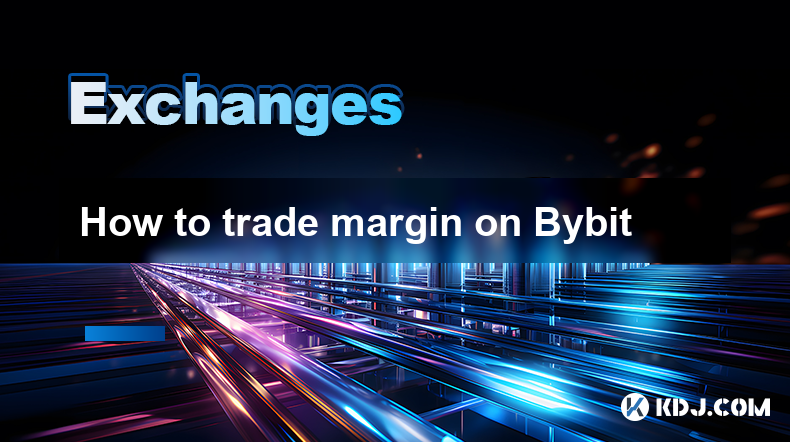
Trading margin on Bybit can significantly amplify your potential profits, but it also increases the risk of losses. Bybit, a leading cryptocurrency derivatives exchange, offers margin trading for both futures and perpetual contracts. To start trading margin on Bybit, you first need to understand the basics of how margin trading works, the different types of margin available, and how to manage your risk effectively. This article will guide you through the process, from setting up your account to executing your first margin trade, and provide tips on how to trade safely and effectively.
Understanding Margin Trading on Bybit
Margin trading allows you to borrow funds to increase your trading position beyond what your own capital would allow. On Bybit, you can trade with up to 100x leverage for certain contracts, which means you can control a position worth 100 times your initial investment. This can lead to significant gains if the market moves in your favor, but it can also lead to substantial losses if the market moves against you. Bybit offers two types of margin trading: cross margin and isolated margin. Cross margin uses your entire account balance to prevent liquidations, while isolated margin allows you to allocate a specific amount of margin to each position.
Setting Up Your Bybit Account for Margin Trading
Before you can start trading margin on Bybit, you need to set up your account properly. Here are the steps you should follow:
- Register and Verify Your Account: Sign up on Bybit's website or app, and complete the verification process to ensure your account is fully functional.
- Deposit Funds: Navigate to the deposit section, choose your preferred cryptocurrency, and transfer funds from your wallet to your Bybit account.
- Enable Margin Trading: Go to the settings or account management section and enable margin trading. This will allow you to access the margin trading features.
- Understand the Interface: Familiarize yourself with Bybit's trading interface, including the order book, trading chart, and order entry forms.
Choosing Your Margin Type: Cross vs. Isolated
When trading margin on Bybit, you have the option to choose between cross margin and isolated margin. Each has its own advantages and risks:
- Cross Margin: This type of margin uses your entire account balance to support your positions. If one position starts to lose money, Bybit will automatically use the rest of your account balance to prevent liquidation. This can be beneficial if you have multiple positions and want to avoid liquidations, but it also means that a significant loss in one position could affect your entire account.
- Isolated Margin: With isolated margin, you allocate a specific amount of margin to each position. This limits the risk to the amount you've allocated, but it also means that if the market moves against you, your position could be liquidated if the allocated margin is insufficient. Isolated margin is useful for traders who want to manage their risk on a per-position basis.
Executing Your First Margin Trade on Bybit
Once you've set up your account and chosen your margin type, you're ready to execute your first margin trade. Here's how to do it:
- Choose Your Trading Pair: Decide which cryptocurrency pair you want to trade. Bybit offers a variety of pairs, including BTC/USD, ETH/USD, and others.
- Select Your Leverage: Choose the leverage you want to use for your trade. Bybit allows up to 100x leverage for certain contracts, but you can adjust this to a lower level if you prefer.
- Place Your Order: Decide whether you want to go long (buy) or short (sell) the asset. Enter the amount you want to trade and the price at which you want to enter the market. You can use market orders for immediate execution or limit orders to enter at a specific price.
- Monitor Your Position: Once your order is filled, monitor your position closely. Use Bybit's trading tools, such as stop-loss and take-profit orders, to manage your risk effectively.
Managing Risk in Margin Trading
Margin trading can be highly rewarding, but it also comes with significant risks. Here are some tips to help you manage your risk effectively:
- Use Stop-Loss Orders: A stop-loss order automatically closes your position if the market moves against you by a certain amount. This can help limit your losses and protect your account balance.
- Set Take-Profit Orders: A take-profit order automatically closes your position when the market moves in your favor by a certain amount. This can help you lock in profits and avoid the temptation to hold onto a winning position for too long.
- Diversify Your Positions: Don't put all your eggs in one basket. Spread your risk across multiple positions and trading pairs to reduce the impact of any single loss.
- Start Small: If you're new to margin trading, start with small positions and gradually increase your exposure as you gain experience and confidence.
Advanced Margin Trading Strategies on Bybit
Once you're comfortable with the basics of margin trading, you can explore more advanced strategies to maximize your potential returns. Here are a few strategies you might consider:
- Hedging: This involves taking opposing positions in the same or related assets to reduce risk. For example, you might go long on BTC/USD and short on ETH/USD to hedge against market volatility.
- Scalping: This strategy involves making numerous small trades throughout the day to capitalize on small price movements. It requires a high level of attention and quick decision-making.
- Swing Trading: This involves holding positions for several days or weeks to capitalize on larger price movements. It requires a good understanding of market trends and the ability to analyze charts effectively.
Using Bybit's Trading Tools
Bybit offers a variety of trading tools to help you execute your margin trading strategies effectively. Here are some of the key tools you should be aware of:
- TradingView Charts: Bybit integrates with TradingView, providing you with advanced charting tools to analyze market trends and make informed trading decisions.
- Order Types: Bybit supports various order types, including market orders, limit orders, stop-loss orders, and take-profit orders. Understanding how to use these orders effectively is crucial for managing your risk.
- Position Management: Bybit's platform allows you to easily manage your open positions, including adjusting your leverage, adding or reducing margin, and closing positions.
- Risk Management Tools: Bybit offers tools like the liquidation price calculator, which helps you understand the risk of liquidation based on your position size and leverage.
Common Mistakes to Avoid in Margin Trading
Margin trading can be lucrative, but it's easy to make mistakes that can lead to significant losses. Here are some common mistakes to avoid:
- Overleveraging: Using too much leverage can amplify your losses as well as your gains. It's important to use leverage cautiously and understand the risks involved.
- Ignoring Risk Management: Failing to use stop-loss orders or other risk management tools can leave you vulnerable to large losses. Always have a risk management plan in place.
- Chasing Losses: Trying to recover losses by taking larger and riskier positions can lead to a downward spiral. Stick to your trading plan and avoid emotional decision-making.
- Neglecting Market Research: Trading without a solid understanding of market trends and technical analysis can lead to poor decision-making. Always do your homework before entering a trade.
FAQs Related to Margin Trading on Bybit
Q: What is margin trading on Bybit?
A: Margin trading on Bybit allows you to borrow funds to increase your trading position beyond what your own capital would allow. You can trade with up to 100x leverage for certain contracts, which means you can control a position worth 100 times your initial investment.
Q: What are the differences between cross margin and isolated margin on Bybit?
A: Cross margin uses your entire account balance to support your positions and prevent liquidations. Isolated margin, on the other hand, allows you to allocate a specific amount of margin to each position, limiting the risk to that amount.
Q: How do I set up my Bybit account for margin trading?
A: To set up your Bybit account for margin trading, you need to register and verify your account, deposit funds, enable margin trading in the settings, and familiarize yourself with the trading interface.
Q: What are some common mistakes to avoid in margin trading on Bybit?
A: Common mistakes to avoid include overleveraging, ignoring risk management, chasing losses, and neglecting market research. Always use leverage cautiously, implement a risk management plan, stick to your trading strategy, and do your homework before entering a trade.
Q: What advanced strategies can I use for margin trading on Bybit?
A: Advanced strategies include hedging, scalping, and swing trading. Hedging involves taking opposing positions to reduce risk, scalping involves making numerous small trades to capitalize on small price movements, and swing trading involves holding positions for several days or weeks to capitalize on larger price movements.
Q: What tools does Bybit offer for margin trading?
A: Bybit offers tools like TradingView charts for market analysis, various order types for executing trades, position management tools for adjusting your positions, and risk management tools like the liquidation price calculator to help you understand the risk of liquidation.
Q: How can I manage risk effectively when margin trading on Bybit?
A: To manage risk effectively, use stop-loss orders to limit your losses, set take-profit orders to lock in profits, diversify your positions to spread risk, and start with small positions if you're new to margin trading. Always have a risk management plan in place and stick to it.
Disclaimer:info@kdj.com
The information provided is not trading advice. kdj.com does not assume any responsibility for any investments made based on the information provided in this article. Cryptocurrencies are highly volatile and it is highly recommended that you invest with caution after thorough research!
If you believe that the content used on this website infringes your copyright, please contact us immediately (info@kdj.com) and we will delete it promptly.
- Bitcoin, Bitfinex, and Acceleration: Decoding the Crypto Crossroads
- 2025-07-01 12:50:11
- SOL, XRP, LTC ETFs: Are We on the Cusp of Crypto History?
- 2025-07-01 12:50:11
- BNB Chain's Maxwell Upgrade: Sub-Second Blocks and a Whole Lotta Speed!
- 2025-07-01 13:10:12
- Bitcoin, Ethereum, Crypto Decline? Nah, Just a New York Minute!
- 2025-07-01 13:10:12
- Coinpass: The Gold-Standard Crypto Platform for UK Businesses
- 2025-07-01 12:30:12
- Tokenized ETFs, Robinhood, and Europe: A New Era of Finance?
- 2025-07-01 12:30:12
Related knowledge
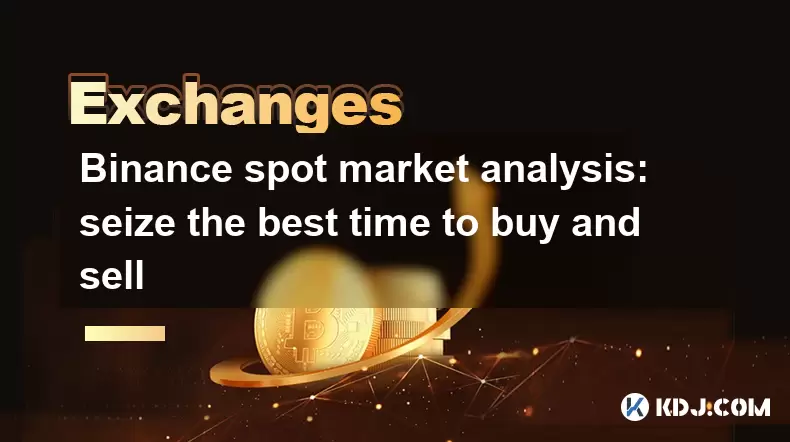
Binance spot market analysis: seize the best time to buy and sell
Jun 19,2025 at 04:56pm
Understanding the Binance Spot MarketThe Binance spot market is one of the most popular platforms for cryptocurrency trading globally. It allows users to trade digital assets at current market prices, making it essential for traders aiming to buy low and sell high. Unlike futures or margin trading, spot trading involves direct ownership of the asset aft...
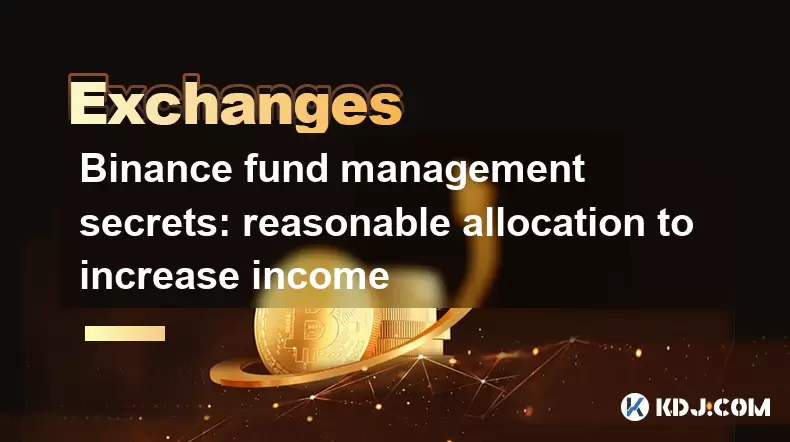
Binance fund management secrets: reasonable allocation to increase income
Jun 22,2025 at 02:29pm
Understanding Binance Fund ManagementBinance fund management involves strategic allocation of your cryptocurrency assets to optimize returns while managing risk. The key to successful fund management lies in understanding how different investment options on the Binance platform can be utilized to create a diversified portfolio. This includes spot tradin...
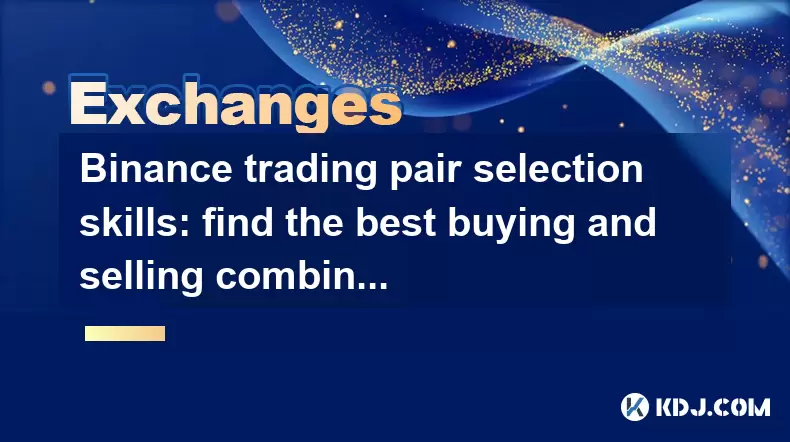
Binance trading pair selection skills: find the best buying and selling combination
Jun 23,2025 at 02:49am
Understanding the Basics of Trading Pairs on BinanceBefore diving into trading pair selection skills, it's essential to understand what a trading pair is. On Binance, a trading pair refers to two cryptocurrencies that can be traded against each other. For example, BTC/USDT means Bitcoin is being traded against Tether. Each trading pair has its own liqui...
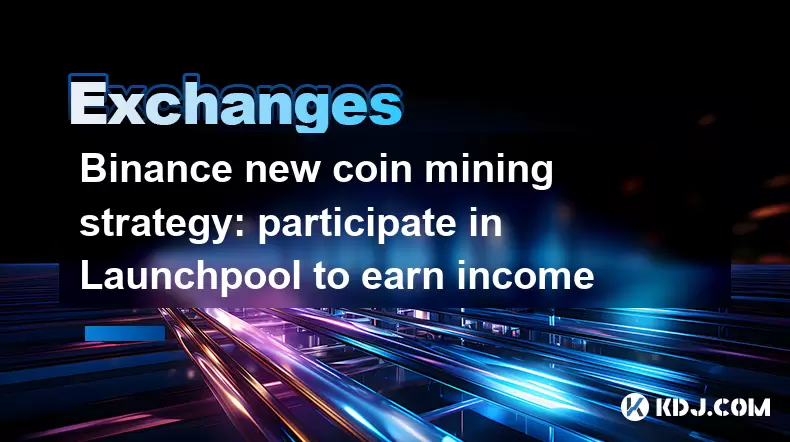
Binance new coin mining strategy: participate in Launchpool to earn income
Jun 23,2025 at 11:56am
What is Binance Launchpool and how does it work?Binance Launchpool is a feature introduced by the world’s largest cryptocurrency exchange, Binance, to allow users to earn new tokens through staking. This platform enables users to stake their existing cryptocurrencies (such as BNB, BUSD, or other supported assets) in exchange for newly launched tokens. T...
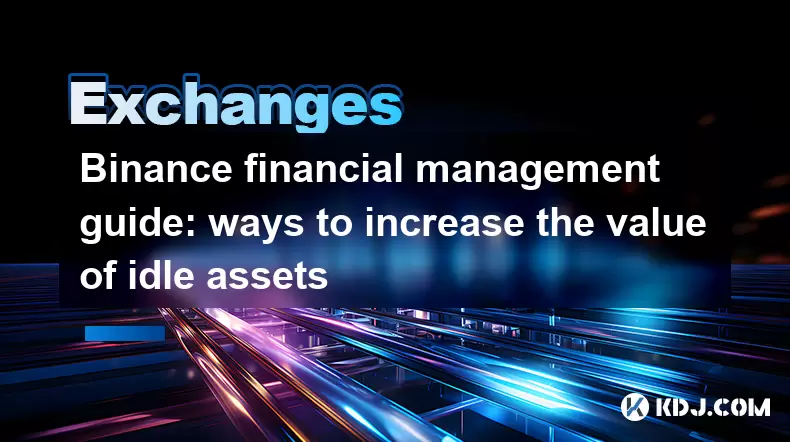
Binance financial management guide: ways to increase the value of idle assets
Jun 19,2025 at 11:22pm
Understanding Idle Assets in the Cryptocurrency SpaceIn the fast-paced world of cryptocurrency, idle assets refer to digital currencies that are not actively being used for trading, staking, or yield farming. Holding these funds in a wallet without utilizing them means missing out on potential growth opportunities. Binance, as one of the leading platfor...
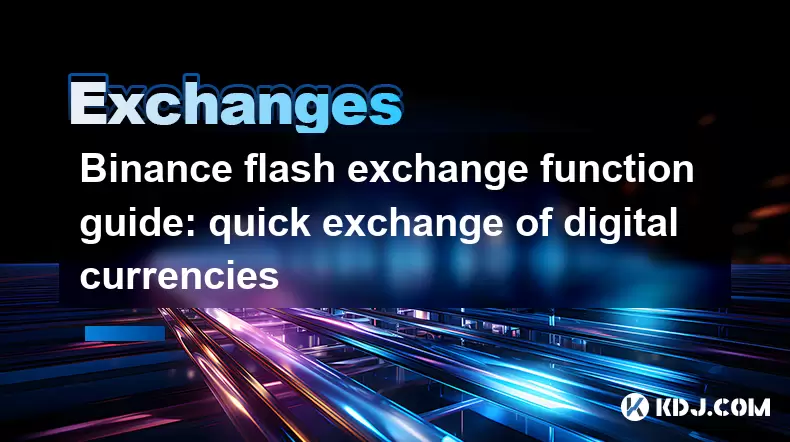
Binance flash exchange function guide: quick exchange of digital currencies
Jun 23,2025 at 12:29pm
What is the Binance Flash Exchange Function?The Binance Flash Exchange function is a powerful tool designed to allow users to instantly swap between supported cryptocurrencies without the need for placing traditional buy/sell orders. This feature simplifies the trading process by offering a direct exchange mechanism, eliminating the requirement to conve...

Binance spot market analysis: seize the best time to buy and sell
Jun 19,2025 at 04:56pm
Understanding the Binance Spot MarketThe Binance spot market is one of the most popular platforms for cryptocurrency trading globally. It allows users to trade digital assets at current market prices, making it essential for traders aiming to buy low and sell high. Unlike futures or margin trading, spot trading involves direct ownership of the asset aft...

Binance fund management secrets: reasonable allocation to increase income
Jun 22,2025 at 02:29pm
Understanding Binance Fund ManagementBinance fund management involves strategic allocation of your cryptocurrency assets to optimize returns while managing risk. The key to successful fund management lies in understanding how different investment options on the Binance platform can be utilized to create a diversified portfolio. This includes spot tradin...

Binance trading pair selection skills: find the best buying and selling combination
Jun 23,2025 at 02:49am
Understanding the Basics of Trading Pairs on BinanceBefore diving into trading pair selection skills, it's essential to understand what a trading pair is. On Binance, a trading pair refers to two cryptocurrencies that can be traded against each other. For example, BTC/USDT means Bitcoin is being traded against Tether. Each trading pair has its own liqui...

Binance new coin mining strategy: participate in Launchpool to earn income
Jun 23,2025 at 11:56am
What is Binance Launchpool and how does it work?Binance Launchpool is a feature introduced by the world’s largest cryptocurrency exchange, Binance, to allow users to earn new tokens through staking. This platform enables users to stake their existing cryptocurrencies (such as BNB, BUSD, or other supported assets) in exchange for newly launched tokens. T...

Binance financial management guide: ways to increase the value of idle assets
Jun 19,2025 at 11:22pm
Understanding Idle Assets in the Cryptocurrency SpaceIn the fast-paced world of cryptocurrency, idle assets refer to digital currencies that are not actively being used for trading, staking, or yield farming. Holding these funds in a wallet without utilizing them means missing out on potential growth opportunities. Binance, as one of the leading platfor...

Binance flash exchange function guide: quick exchange of digital currencies
Jun 23,2025 at 12:29pm
What is the Binance Flash Exchange Function?The Binance Flash Exchange function is a powerful tool designed to allow users to instantly swap between supported cryptocurrencies without the need for placing traditional buy/sell orders. This feature simplifies the trading process by offering a direct exchange mechanism, eliminating the requirement to conve...
See all articles

























































































